
Golden Age of Dutch painting - an era that gave the world the finest masterpieces of Dutch art of all times
Golden Age of Dutch painting — the widely accepted term for the great era in Dutch visual art during which local masters created numerous unique masterpieces. The Golden Age of Dutch painting fell in the 17th century and encompassed nearly all known genres of the time, greatly influencing the further development of European visual art.
 Golden Age of Dutch painting. Willem Cornelis Deister. Soldiers beside a Fireplace, 1632
Golden Age of Dutch painting. Willem Cornelis Deister. Soldiers beside a Fireplace, 1632
The Golden Age presented the world with an immense number of works by talented artists. According to modest estimates by modern art historians, Dutch painters produced around a million paintings during that century. Today, the painting of that period stands as a crucial cultural treasure of the Netherlands.
 Golden Age of Dutch painting. Gerard Terborch. Self-portrait, 1668
Golden Age of Dutch painting. Gerard Terborch. Self-portrait, 1668
Characteristics of the Golden Age of Dutch painting
The Golden Age of Dutch painting is a unique phenomenon in the history of world visual art. Unlike most other Western European countries, this region developed its own style of painting in the 1600s to 1700s, merging characteristics of Baroque and realism. The works of local masters also extensively employed symbolic and allegorical images. Instead of a single artistic center, several distinct regional schools formed in various cities:
- Leiden.
- Utrecht.
- Delft.
- Alkmaar.
- Haarlem.
- The Hague.
- Amsterdam.
Among the painters of the Golden Age, three of the most famous Dutch painters hold a special place:
- Rembrandt.
- Frans Hals.
- Johannes Vermeer.
 Golden Age of Dutch painting. David Bailly. Self-Portrait with Vanitas Symbols, circa 1651
Golden Age of Dutch painting. David Bailly. Self-Portrait with Vanitas Symbols, circa 1651
The works of these artists consistently belong to the highest price category on the contemporary art market, and their creations are considered the pinnacle of skill of that era. The majority of other Dutch painters from that period are typically divided into two main groups in modern art history: "small Dutch masters" and "Utrecht Caravaggists".
 Golden Age of Dutch painting. Dirck van Baburen. Saint Francis in Meditation, circa 1618
Golden Age of Dutch painting. Dirck van Baburen. Saint Francis in Meditation, circa 1618
The term "small Dutch masters" should by no means be perceived as an assessment of the level of talent or significance of these painters' works. It merely characterizes the small size of the authors' works and their specialization in intimate domestic scenes.
 Golden Age of Dutch painting. Matthias Stomer. Samson and Dalila, 1630
Golden Age of Dutch painting. Matthias Stomer. Samson and Dalila, 1630
The Utrecht Caravaggists developed the ideas of the ingenious Italian painter Caravaggio in their works. Most of them spent a significant portion of their lives in Rome but gained recognition in their homeland upon returning from extended trips to the Eternal City. Among them, the most famous names are:
- Gerrit van Honthorst.
- Hendrick Terbrugghen.
- Dirck van Baburen.
- Matthias Stom.
- Paulus Bor.
 Golden Age of Dutch painting. Paulus Bohr. The Annunciation of the Virgin's Death, 1635-1640
Golden Age of Dutch painting. Paulus Bohr. The Annunciation of the Virgin's Death, 1635-1640
Dutch painting of the 17th century was surprisingly multifaceted. At the same time, an important distinguishing feature was the narrow specialization of most artists who worked their entire lives in one or, at most, two genres. The main reason for this was intense competition, which required artists to fiercely compete for patrons throughout their lives and constantly refine their skills in their chosen artistic sphere.
 Golden Age of Dutch painting. Pieter de Hooch. Couple with a Parrot, 1668
Golden Age of Dutch painting. Pieter de Hooch. Couple with a Parrot, 1668
The Golden Age of Dutch painting includes an countless number of works created in all popular genres of the era:
- Historical.
- Portrait.
- Genre scenes.
- Landscape.
- Still life.
 Golden Age of Dutch painting. Rembrandt. The Night Watch, 1642
Golden Age of Dutch painting. Rembrandt. The Night Watch, 1642
Alongside traditional individual portraits and self-portraits, Dutch artists often depicted group images of people. Moreover, it was during this time that a special genre of portrait emerged called "tronie," in which characters were portrayed with unusual facial expressions.
 Golden Age of Dutch painting. Frans Hals. Married Couple in a Garden, 1622
Golden Age of Dutch painting. Frans Hals. Married Couple in a Garden, 1622
Thanks to Dutch masters, still life earned a worthy place in the world of art. Moreover, local artists created a vast array of diverse subgenres, from floral to philosophical. The famous maritime, rural, and city landscapes continue to captivate viewers with their magnificent views.
 Golden Age of Dutch painting. Hendrick ter Brugghen. Boy with a Pipe, 1623
Golden Age of Dutch painting. Hendrick ter Brugghen. Boy with a Pipe, 1623
History of the Golden Age of Dutch painting
The history of the Golden Age of Dutch painting vividly reflects a series of events that occurred in that era in a small European country. In the late 16th century, seven northern Dutch provinces gained independence from the powerful Spain in a war and formed a separate state. The young republic became a center of European progress in trade, navigation, printing, and textile industry.
 Golden Age of Dutch painting. Caesar van Everdingen. Bacchus and Ariadne, 1660
Golden Age of Dutch painting. Caesar van Everdingen. Bacchus and Ariadne, 1660
Furthermore, Protestantism firmly established itself as the dominant religion in the Netherlands. This led to a decline in the religious genre in painting but contributed to the development of other directions. The prosperity of the inhabitants of Dutch cities, thanks to successful trade, began to improve rapidly, and many citizens started acquiring artworks to decorate the interiors of their homes.
 Golden Age of Dutch painting. Jacob van Ruisdael. Forest Landscape, 1660
Golden Age of Dutch painting. Jacob van Ruisdael. Forest Landscape, 1660
By 1625, a powerful art market had formed in the Netherlands, with wealthy individuals buying paintings by the dozens, and art collecting became a fashionable trend. The frenzied demand led to the emergence of a large number of artists and the development of various genres, creating ideal conditions for the flourishing of painting.
 Golden Age of Dutch painting. Jacob Duck. Soldiers and Girls, 1650
Golden Age of Dutch painting. Jacob Duck. Soldiers and Girls, 1650
Over the next 50 years, Dutch visual art experienced an unprecedented boom. Civil servants, merchants, teachers, small traders, and craftsmen became active buyers of paintings, and the profession of an artist became prestigious and well-paid.
 Golden Age of Dutch painting. Johannes Vermeer van Delft. Girl with a Pearl Earring, 1667
Golden Age of Dutch painting. Johannes Vermeer van Delft. Girl with a Pearl Earring, 1667
This continued until the mid-1670s when, after a series of wars with England and France, the Netherlands lost its dominance in the global economy, and the prosperity of the country's inhabitants began to deteriorate rapidly. In the new conditions, most artists were left without work, and by the beginning of the 18th century, the Golden Age of Dutch painting came to an end.
 Golden Age of Dutch painting. Jan Livers. An Old Woman Reading, 1621
Golden Age of Dutch painting. Jan Livers. An Old Woman Reading, 1621
Most Famous Artists of the Golden Age of Dutch Painting
Among the vast number of talented Dutch artists of the 17th century, there are many worthy names. Nevertheless, the most famous artists of the Golden Age of Dutch painting include:
- Rembrandt - the greatest painter of that era in the Netherlands. His name is familiar even to people far from the world of art, and his works are characterized by immense dynamic tension and detailed depiction of characters.
- Frans Hals - an unparalleled Dutch portraitist, whose works always featured a dominant use of black. His five sons also became artists, although they couldn't surpass their father's level of mastery.
- Johannes Vermeer - an artist whose creative legacy was truly appreciated by descendants only 250 years after his death. Vermeer became renowned for his genre paintings and portraits, with the peak of his work's popularity coming in the second half of the 19th century.
- Jacob van Ruisdael - the most famous representative of the landscape genre of the Golden Age. The majority of Ruisdael's paintings are devoted to the grandeur of his homeland's nature, and his creative legacy includes around 450 works.
- Jan Steen - a unique master of humorous single and group portraits, whose works introduce viewers to the lively lifestyle of ordinary Dutch people of that time. Steen also painted many works in the religious and mythological genres, but preferred to take an ironic view of life.
 Golden Age of Dutch painting. Jan Steen. The way you hear it, 1665
Golden Age of Dutch painting. Jan Steen. The way you hear it, 1665
The Golden Age of Dutch painting will forever remain in the memory of descendants thanks to the splendid works of these brilliant artists of that era. Fortunately, a vast number of unique masterpieces have been preserved to this day in the exhibitions of the finest museums and private collections of patrons.

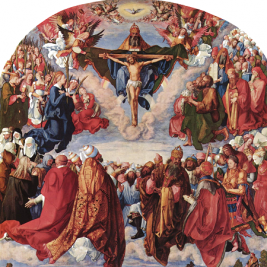 The painting "The Adoration of the Trinity" by Albrecht Dürer - The City of God through the eyes of the artist
The painting "The Adoration of the Trinity" by Albrecht Dürer - The City of God through the eyes of the artist 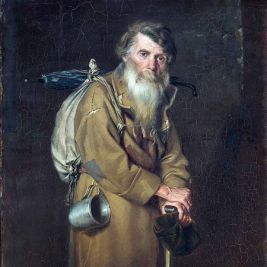 The painting "The Wanderer" by Vasily Grigorievich Perov portrays the image of noble poverty and human dignity
The painting "The Wanderer" by Vasily Grigorievich Perov portrays the image of noble poverty and human dignity 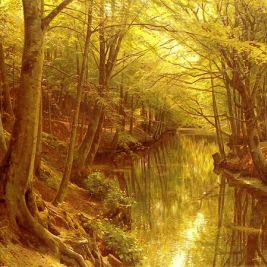 Landscape - a genre in painting: views, history, evolution
Landscape - a genre in painting: views, history, evolution 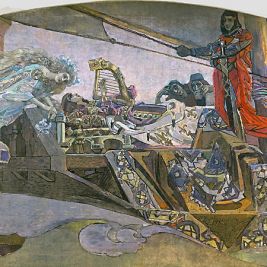 Modern - breakthrough or just a transitional period
Modern - breakthrough or just a transitional period 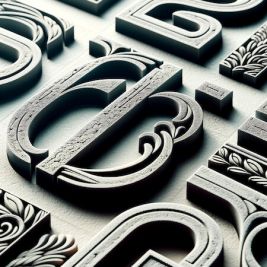 Texture in Typography: Revitalizing Design with Tactile Sensations
Texture in Typography: Revitalizing Design with Tactile Sensations 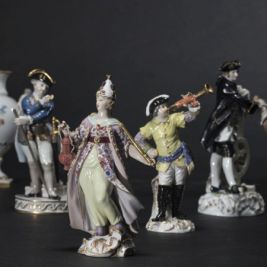 Online auction at HERMANN HISTORICA 8-13 July 2024: Kunst, Antiquitäten & Antiken
Online auction at HERMANN HISTORICA 8-13 July 2024: Kunst, Antiquitäten & Antiken 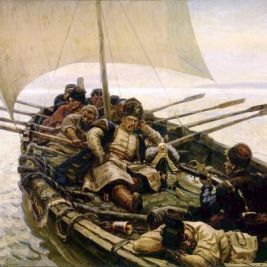 The painting "Stepan Razin" by Vasily Surikov is a tragic truth that triumphs over the epic image
The painting "Stepan Razin" by Vasily Surikov is a tragic truth that triumphs over the epic image 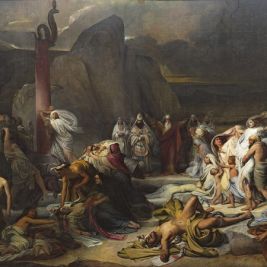 The painting "The Bronze Serpent" by Fyodor Bruni is an interpretation of an Old Testament story by a great master
The painting "The Bronze Serpent" by Fyodor Bruni is an interpretation of an Old Testament story by a great master 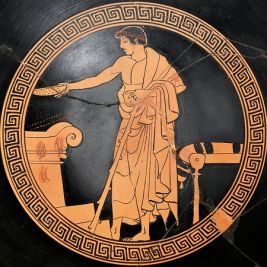 The art of Ancient Greece is an endless source of aesthetic pleasure for descendants
The art of Ancient Greece is an endless source of aesthetic pleasure for descendants  The painting "The Umbrellas" by Pierre-Auguste Renoir is a masterfully created illusion of black color
The painting "The Umbrellas" by Pierre-Auguste Renoir is a masterfully created illusion of black color